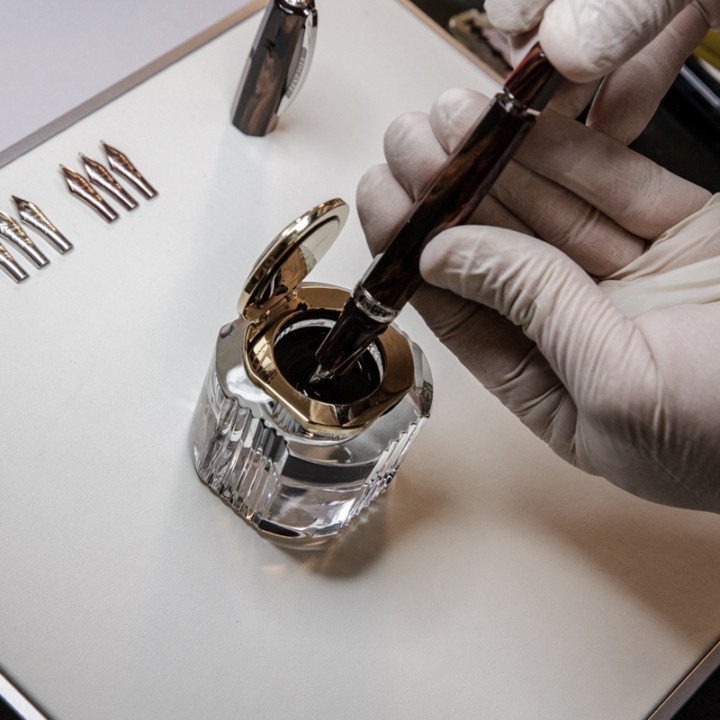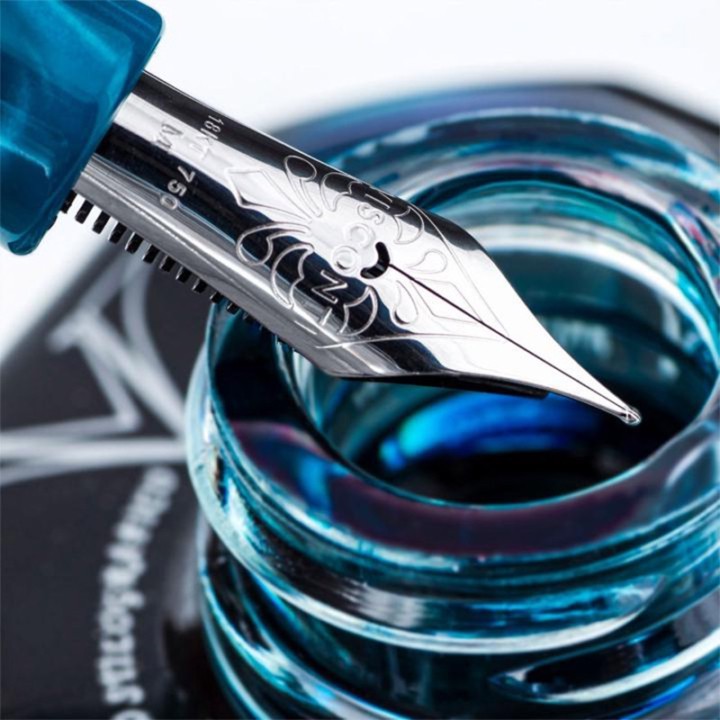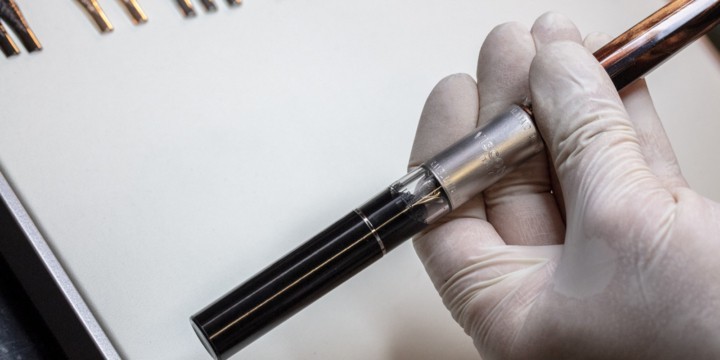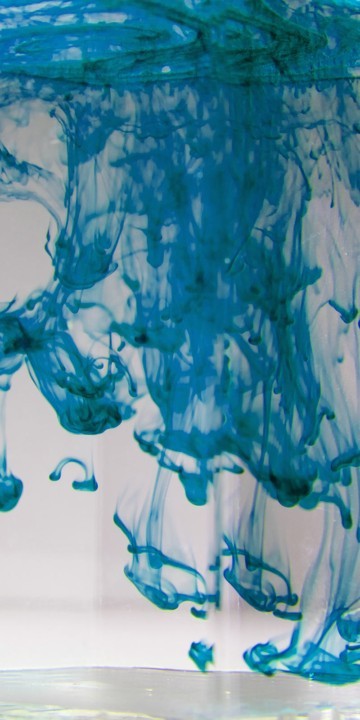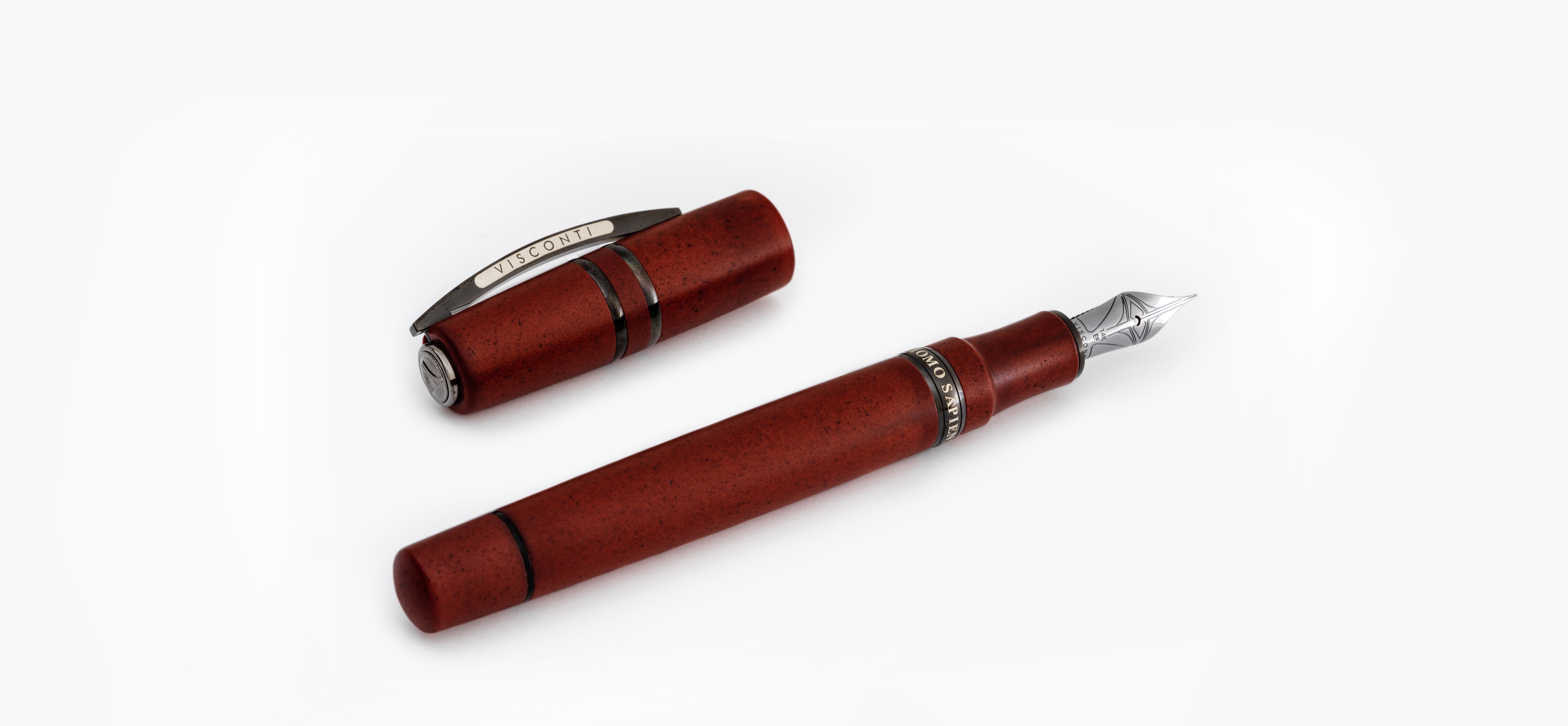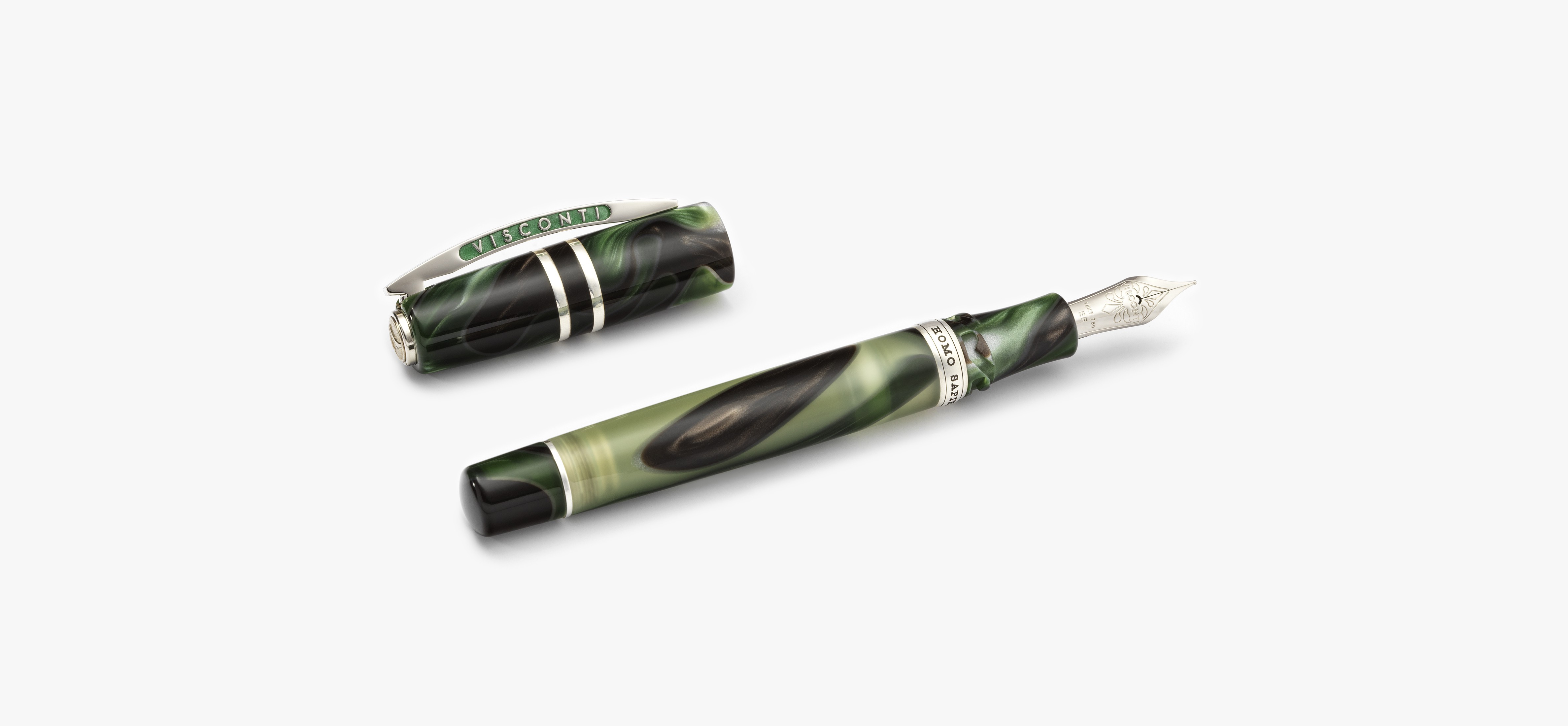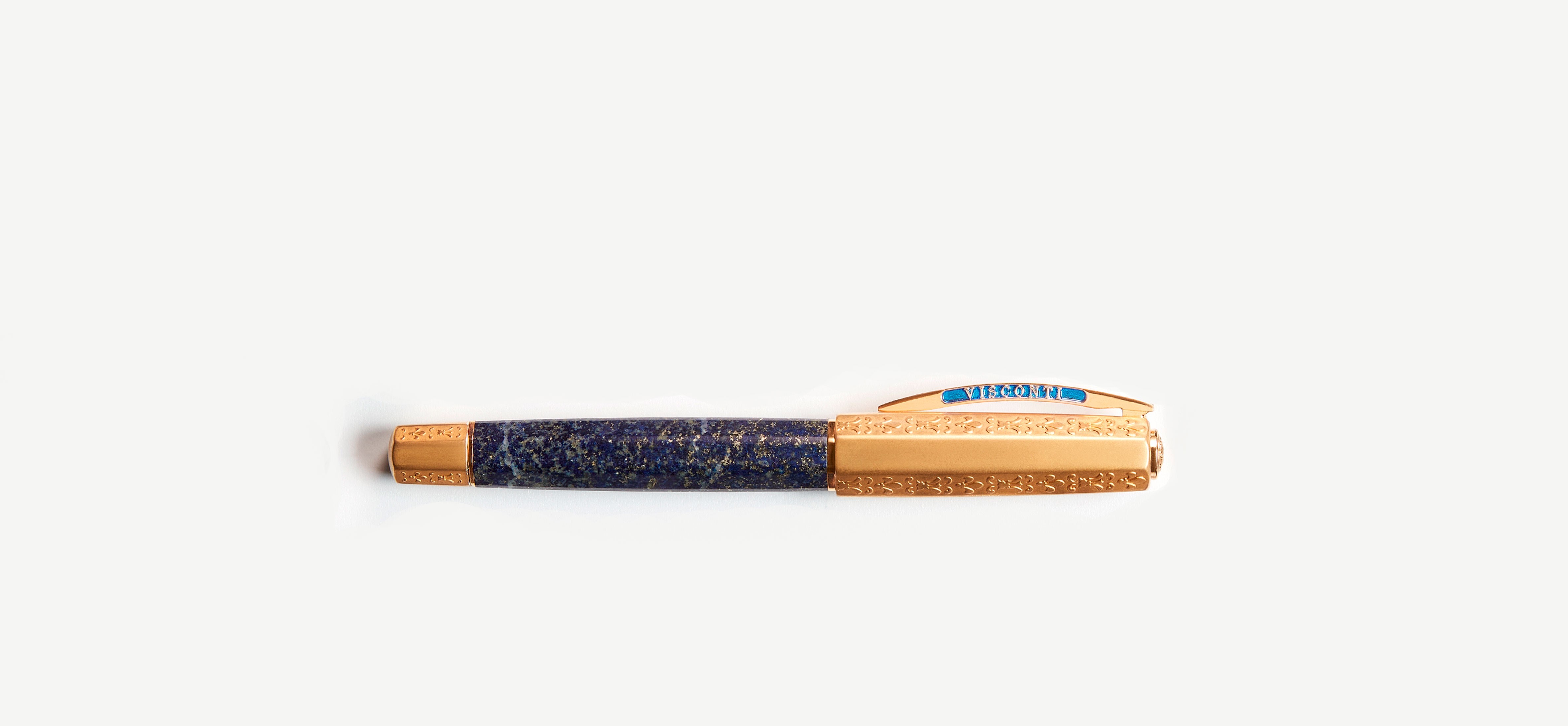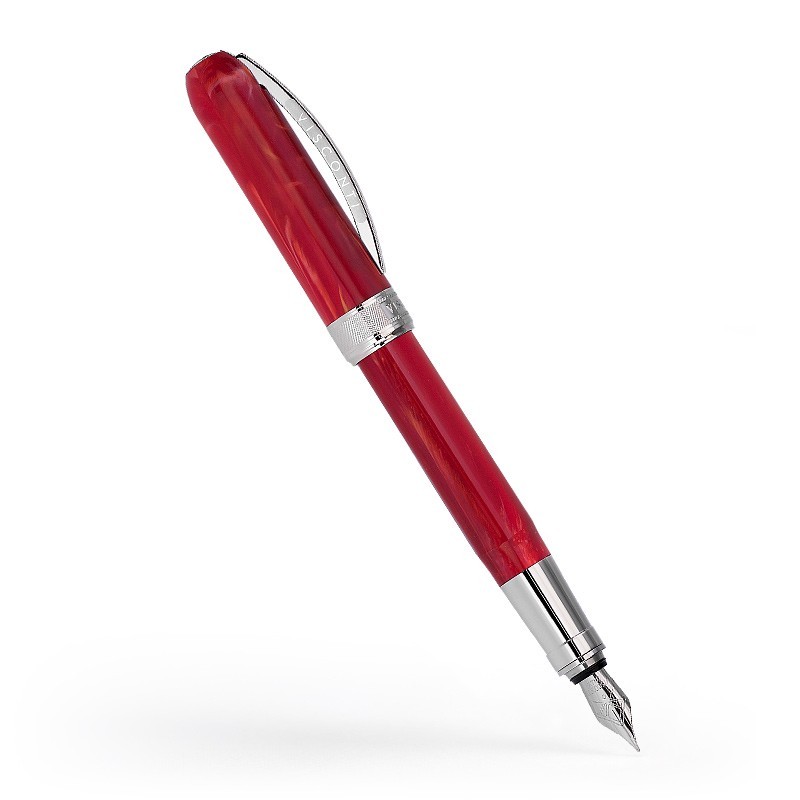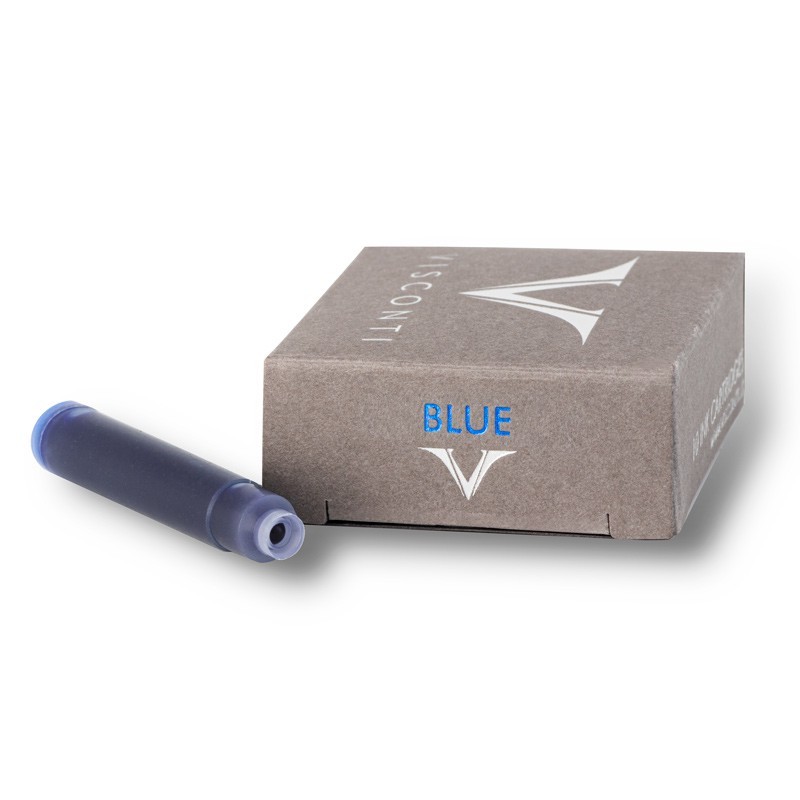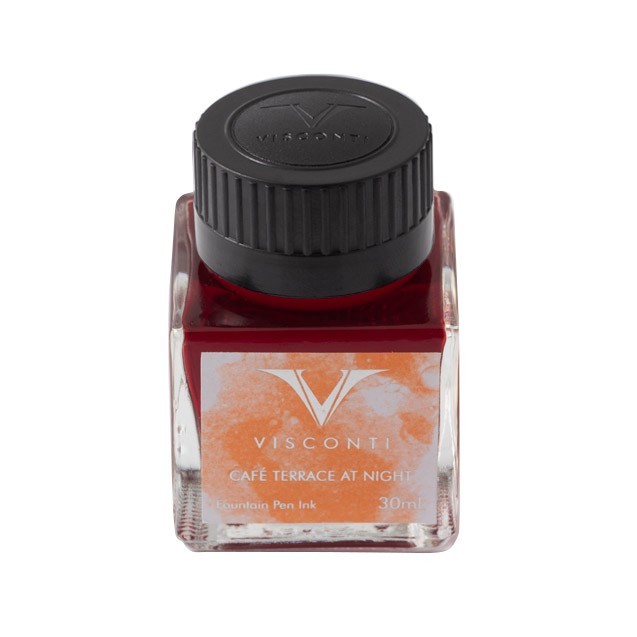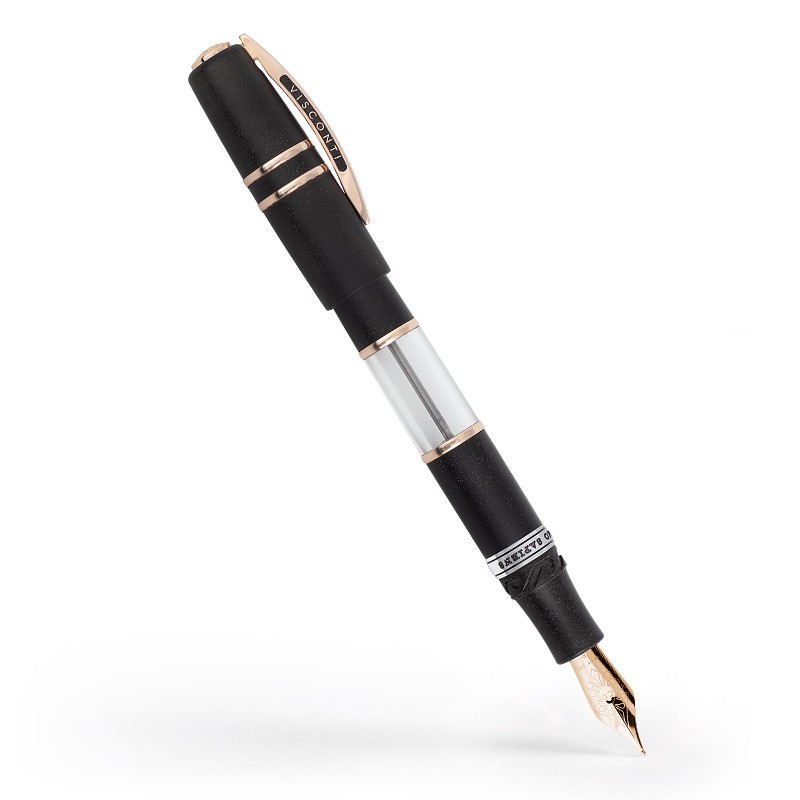How to care for a fountain pen
Made from durable, high quality materials, Visconti fountain pens are designed to stand the test of time without changing their appearance or functionality. However, in order to preserve your pen’s beauty and lifespan, it is necessary to observe a few small but fundamental steps.
How to store your fountain pen
If you are a frequent fountain pen user, make sure to slip your pen in its case or in a suitably lined pen holder after use. Though it may seem counter-intuitive, the best position for a writing instrument is vertical, with the nib facing up. It is best to avoid placing it with the nib pointing downwards as the ink would remain in constant contact with the feed and nib. Even when the pen is horizontal, the ink remains in contact with the feed, which may become saturated after a couple of days, possibly causing ink to leak into the cap. This problem doesn’t occur if your pen is equipped with the double-reservoir filling system.
If you do not plan to use your pen for an extended period of time, drain the ink from the reservoir or remove the cartridge to prevent clogs in the feeder. If you will not be using your pen for months or even years, it is good practice to store the pen unloaded and completely dry in its case after a deep cleaning to avoid the formation of ink incrustrations or mould. These steps guarantee that when you decide to use it once more, you will find it in perfect condition.
Cleaning your fountain pen
Fountain pen cleaning techniques vary depending on the materials of the pen’s various components, its filling and feeding systems. Here is an overview of the best practices for both routine maintenance cleaning and thorough cleaning to remove any deposits in the nib or feeder.
Routine maintenance cleaning
Whether you use your fountain pen on a daily basis or only every now and again, it needs to be cleaned regularly before being stored in its case or before an ink change.
For these regular cleanings, it is preferable to wash only the nib. This can be done in the following two ways. In the first, the nib is immersed in water inside a container that holds it upright. In the second, more thorough approach, the writing unit is unscrewed and washed individually using a pipette or syringe filled with water. You will know the washing process is complete when the nib no longer leaks ink during the soaking or rinsing procedure.
Regardless of the type of material used for the nib and the section, it is advisable to use water at room temperature (in any case, no hotter than 30-40°), preferably distilled, to avoid the accumulation of limescale residue over time. For routine cleaning, it is best to let the ink dissolve in water by simple diffusion, without adding any specific solvents. Fountain pen inks are generally solutions, in other words, they contain water-soluble pigments, which means that there is no need to use chemical detergents to wash them off. In rare cases of encrustation or other such problems, however, detergents can prove helpful.
After washing the pen, it is important to allow the nib to dry on absorbent paper with the tip pointing downwards. If the nib still releases colour deposits, the washing operation should be repeated.
N.B. In addition to the nib, it is good practice to regularly clean the inside of the cap by dabbing it with absorbent paper moistened with water.
Cleaning the pen to remove clogs
After a long period of inactivity or due to poor maintenance, your fountain pen may no longer have a smooth stroke or may be unable to write due to ink blockages. In these cases a thorough cleaning of the section, nib and feed system is necessary. Due to its complex nature, this cleaning process should be done only in very specific cases and under the supervision of an expert as it requires the delicate disassembling and reassembling of various components.
The thorough cleaning procedure follows the same basic rules as the ones for routine cleaning: soaking in tepid, preferably distilled water, and the complete drying of every part that has come into contact with water on a bit of absorbent paper. In the specific case of clogging, however, the nib must be carefully unscrewed from the section. The feeder, section and nib can be immersed in three different containers. This makes it easier to control when the water needs to be changed and when the various components no longer release ink.
Once soaked, the pen is rinsed with a pipette or syringe filled with water. The various parts should continue being rinsed until the water comes out clear which is a sign the obstruction has been completely removed and the pen has gone back to its original working condition.
As these operations are particularly complex, especially for novices, it is advisable to always contact the company or professionals in order to avoid carrying out operations that could compromise the later use of the writing instrument.


